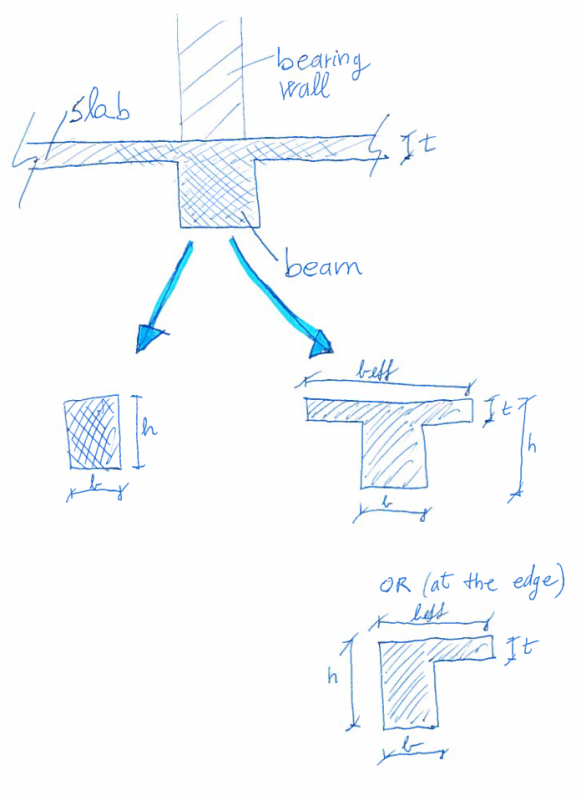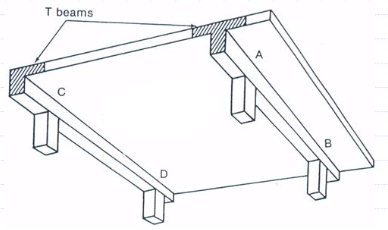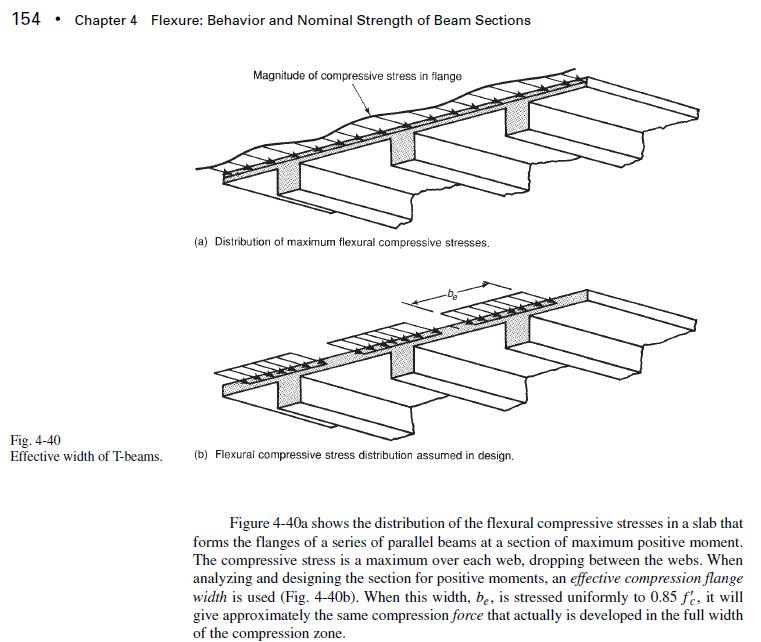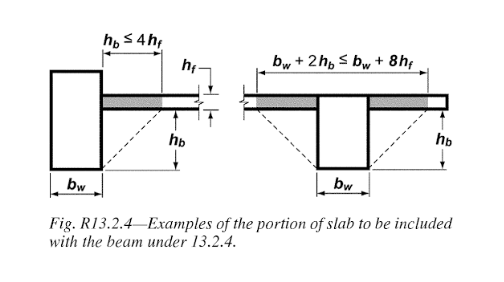I am often dealing with beams that are partly integrated in a slab. Usually I design them as rectangular cross section. But I am wondering if this is really the best way to go since I think its pretty conservative assumption (that way we dont consider part of the slab that also helps with bending).
This way is the quickest and most simple.
If we design said beam as T seaction with effective width of a slab (beff) we get much wider compression area of the beam so we need less tension reinforcement. I think this option is slower (to determine beff) but more accurate?
Which way do you go?
Also how do you determine beff?


This way is the quickest and most simple.
If we design said beam as T seaction with effective width of a slab (beff) we get much wider compression area of the beam so we need less tension reinforcement. I think this option is slower (to determine beff) but more accurate?
Which way do you go?
Also how do you determine beff?







